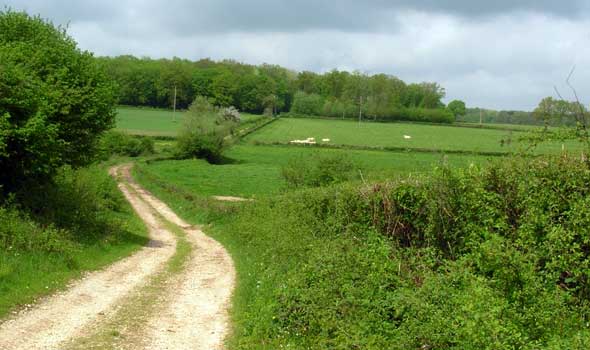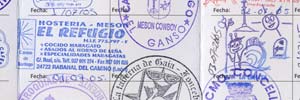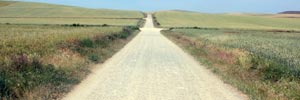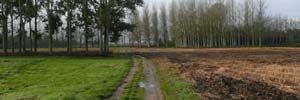
Walking across France on the Grandes Randonnées GR 654…
Weights & Measures – part 5
Temporary or Accumulated Weight: weight added and carried for a brief period and then removed, sent home, left behind, or disposed. You don’t have to be a packrat to find you have more stuff at the end of a day than you started out. I constantly acquire various guide books, maps, souvenirs, brochures, post cards, receipts, food packaging and the like as I make my way from village to village. Tourist offices offer a ton (well, almost) of materials about the local region. A lot of it is useful, at least for a while. But soon, it becomes a substantial burden that needs to be managed, which means disposed of in one way or another.
In a short time, you can end up with a couple dozen postcards. Maybe a better strategy is to buy some in the morning, write them during your lunch break, and mail them at the next post office.
Free Weight: available, unused capacity – weight that can be allocated to additional payload for optional and “luxury” items. This is your reward for carefully assembling a minimal weight kit of essential gear. To the extent you can eliminate unnecessary weight elsewhere, you gain the freedom to carry something else, up to your maximum, comfortable limit. You have the choice if and how to “spend” this load.
Grey Matter Weight: “weightless” knowledge and experience. Perhaps best of all, these are valuable “things” you carry that add absolutely no weight, since your three pounds of brains come as standard equipment. Your accumulated knowledge and experience can significantly reduce the physical weight of your load – curiosity can reduce your need for artificial entertainment; the better you know a foreign language before visiting a country that speaks it, the smaller the dictionary you’ll need, and the easier you can enjoy your conversational skills, learn about the region, and gather local knowledge. Learning to cook with the least amount of fuel, and how to improvise solutions also cost nothing to carry.
Payload or FOB (Freight on board): weight that fulfills the purpose of your walk. Often highly personal, at other times, quite ordinary. I’ve met walkers on the Santiago de Compostela road who carried bibles or rosaries, artists with sketchpad, ink, or water colors, avid birders carrying binoculars and field guides (otherwise, what’s the point?) and any number of books and guides that inform the private basis of a long walk through new territory. A pre-departure consideration is whether to gather these things before leaving, or to acquire them as you require them. Field guides for example are readily available in most towns and cities large enough to have a bookstore, or even a modest book section, and may be more specific to the region of travel.
In any case, this is some of the most important weight allotment we carry – a high priority. Use it as a motivating force to minimize other kinds of load.
Residual Weight: unused gear and supplies that remain at the end of a walk. You can learn valuable lessons by weighing your backpack both before and after your walk. The difference, weight shed during the course of the trek, through consumption and disposal, adds to your experience about how much you actually needed.
Separate out all the consumable and expendable food, fuel, pills, creams, liquids, etc. that you still have and weigh it all together. If you weighed all your containers before filling them, subtract the sum of those weights, and you’ll have the total amount of surplus supplies you carried. That’s essentially extra deadweight you carried the entire way. Make notes about your findings. Some of it might be “insurance weight”, but a lot may well be stuff you can take less of next time. Perhaps you didn’t use the whole store-bought bottle of sunscreen or tube of toothpaste. Next time, find a smaller (and lighter) container and fill it with the amount you actually used – if you took 4 ounces of toothpaste and returned with 1, next time, for the same number of days, take 3.
You can also calculate the amount you actually consumed on a daily basis. If you expended 3 ounces (85 grams) during a 3-week walk, that’s 4 grams (.14 ounces) per day. Now you know exactly how much you need for a similar trip of any duration – 4 grams per day times the number of days.
You can determine a lot of this information and avoid unnecessary residual weight without stepping out of your house. For example, mark a tube of toothpaste (of any size, it doesn’t have to be new) with the date and weigh it. When it’s empty, or after several days (the more the better), weigh it again. The difference in weight (A) is the amount you used and the difference in date (B) is the number of days it took to use it. A divided by B is the weight of your daily toothpaste consumption. Note that if you live with your backpacking companion, you can both share the same tube (which eliminates one container), but if not, be sure to keep your trial tube separate.
Conversely, if you depart with a given supply of something, but consume it all sooner than planned, note how many days it lasted. If you measured the pre-departure quantity, you can easily calculate how much per day you used and hence, how much you’ll need next time.
All of this is part of the experience building and planning you can do before setting off on your next great adventure. Continued awareness and practice of the techniques of ultralight weight management, will provide great benefits on the trail and lead to ever loftier heights of longwalking success. Discover the HELIUM SYNDROME >>>




